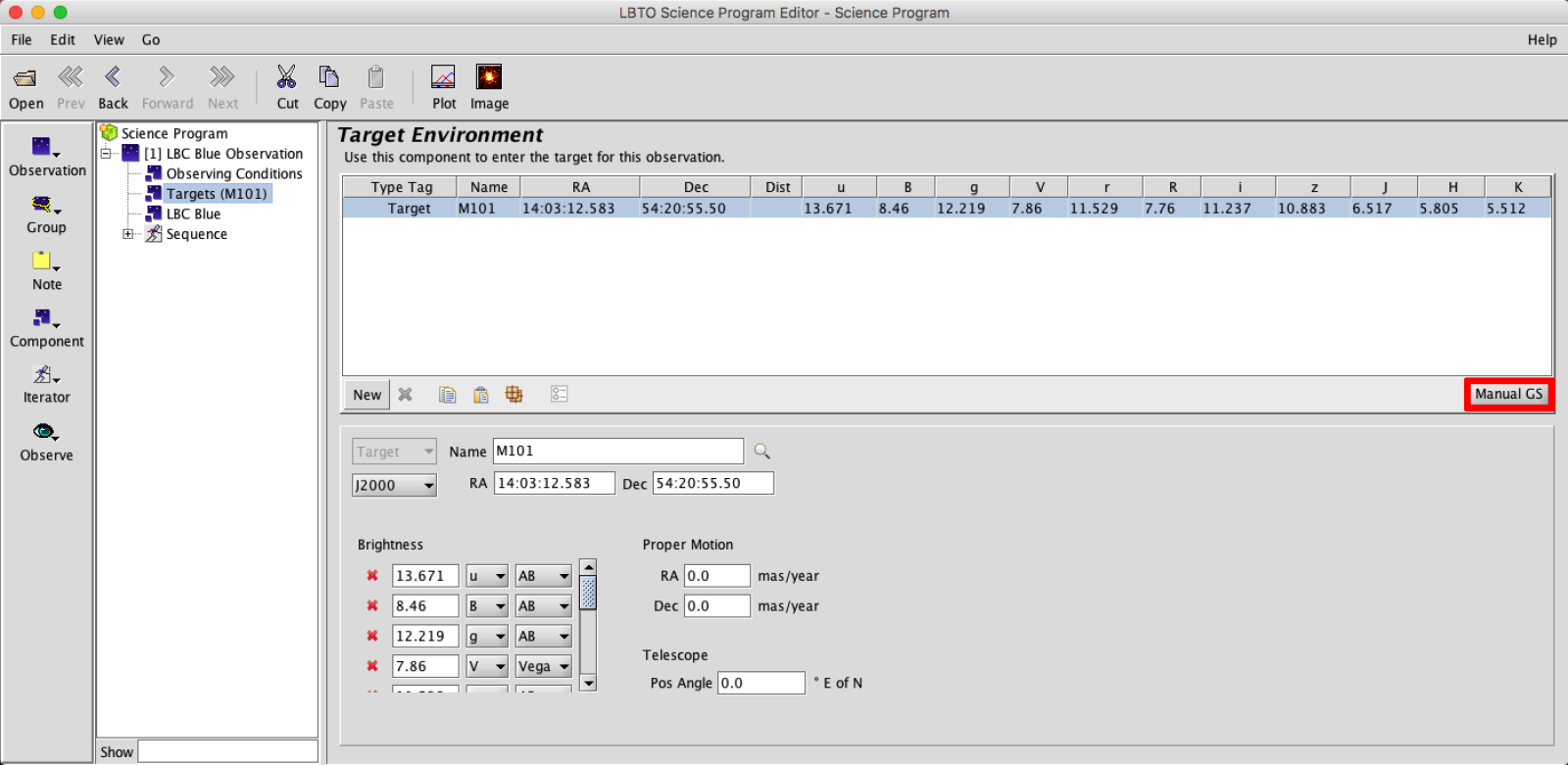LBC GS & FS Verification
Given the automated nature of LBC guiding, PIs do not choose specific Guide or Focus stars in the planning/scripting stage; the process is instead a Guide/Focus star verification. The user wants to ensure that there are suitable guide stars located in the 256 pixel x 2048 pixel technical chips at each dither position for the automated algorithm to find. If not, the user may decide to slightly alter their target position, PA, or offsets to ensure adequate GS/Focus star availability.In the OT, appropriate magnitude limits have been pre-loaded into the query parameters for the Manual Guide Star Searches for the NOMAD and UCAC4 catalogs. Methods for performing searches for Guide and Focus stars are described below.
Bring up the field in the Position Editor and overlay the NOMAD or UCAC4 Guide Star Catalogs. This can be done 2 ways:
-
- In the Target Element, select the ManualGS button from the right side.

- In the Target Element, select the ManualGS button from the right side.
- Open the Position Editor by clicking the Image Button in the OT Main Toolbar. In the Position Editor, select the ManualGS from the Position Editor Main Toolbar.
This will bring up the Position Editor, along with the Guide Star Selection pop-up.

From this pop-up the user can select which catalog they desire to query: UCAC4 or NOMAD, and which type of star they are seeking. The user should select whether they are verifying Guide or Focus stars, as these do have different magnitude limits.
The user can also select from a dropdown menu the filter they are using for their observations. This is critically important; the technical chips are at the science focal plane, which sits behind the filter wheel, so the GS and Focus stars are observed in the same bandpass as the science. So, if the user is using the U-band for your science, they will want to make sure there are adequate guide and focus stars in the the guide and focus chips in U-band. If the user is observing in multiple bands, they may want to check all observed bands. Selecting a filter automatically ensures that proper magnitude limits are applied to the query, so even checking multiple filters is a simple procedure.
By default, the Position Editor typically will show an overlay of the science array, guide and focus tech chips, the collimation area, and user added targets. If these Field of Views are not overlaid if may be good to over lay them (see here for details).
Once a catalog is selected from the Guide Star Selection pop-up, those will be overlaid with either green circles (UCAC4) or turquoise squares (NOMAD). Make sure that appropriate Catalog Query is selected in the Position Editor Left Siedebar.
Note that an image of the field will not automatically appear. An image of the field can be downloaded from an image server one of two ways. Hit the Images button in the Position Editor Main Toolbar to query the the default image server using the base coordinates of the observation selected in the Target Element. Or one can use the Catalog button to open the Catalog Navigator. Keep in mind that the catalog overlay may not align perfectly with the image. Due to the large FOV, there is some distortion in the DSS images.




